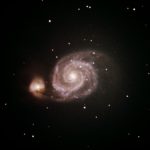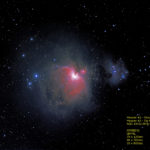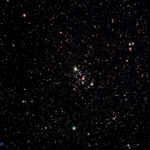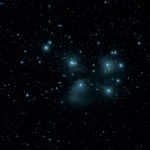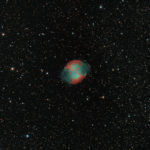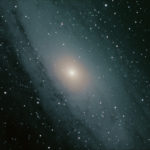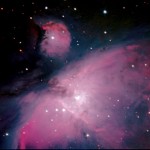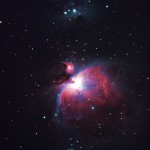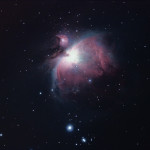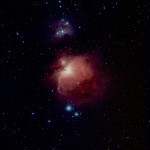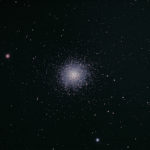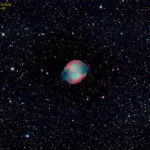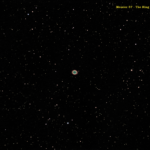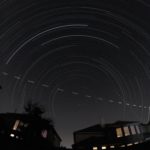Barnard 33 – The Horsehead Nebula in Orion
If you find Orion’s belt, the eastern most star is Alnitak. Just a bit South and West from that star is this region, cataloged by Edward Emerson Barnard in 1919 in his book of dark nebulae. This cloud of dust is #33 on his list so we refer to it as Barnard 33. Colloquially we know this as the Horsehead Nebula thanks to its shape reminding most people of the western world of our equine companions.
Light pollution being what it is and with LED lighting becoming more commonplace, I’m now beginning to feel that only narrowband imaging will be practical from the back yard. Narrowband images look at very specific frequencies of light. Not just Red, Green or Blue. Narrowband typically focuses on frequencies emitted by Hydrogen, Oxygen and Sulphur. The first ionization of Hydrogen (H-alpha), the third ionization of Oxygen (O-III), and the second ionization of Sulphur (S-II). Why the change in nomenclature? No idea, ask the smart guys that came up with the “standard” some time after the discovery of ionization states by Dmitri Mendeleev in 1869.
This image was taken in worst possible case scenarios. Not intentionally but I did know what I was getting into. I’m filtering at least 99% of all light by looking at a very narrow band of frequencies around 656nm wavelength +/- 3.5nm. My filter has a 7nm bandpass, thus the +/- 3.5nm metric. This frequency of light is specific to Hydrogen-Alpha (H-a) and pretty much nothing else. Exposure times for light that tightly filtered is ridiculously long. Each of the 52 frames used to composite this image are 10 minutes long. That’s 8.6 hours which had to be done over three nights. I must wait for the sun to be well and fully down and not influencing the sky so I was trying to get started at 8:00pm. That never happened, mechanical things being finicky always slows down the start up process. Barnard 33 disappeared behind our roof at about 1:00am. On the best nights I got started by 9:00pm so I could get no more than 3-4 hours per night if everything went to plan. Plans being what they are, that was never followed.
Filter: Baader Planetarium 7nm Hydrogen-Alpha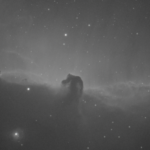
Camera: QHY8L binned down 2×2
Telescope: Celestron EdgeHD 8″ + 0.7x Focal Reducer
Guide Scope: Orion Mini Guider Deluxe
Guide Camera: ZWO ASI120MM-S
Exposure: 52 x 10 minutes
